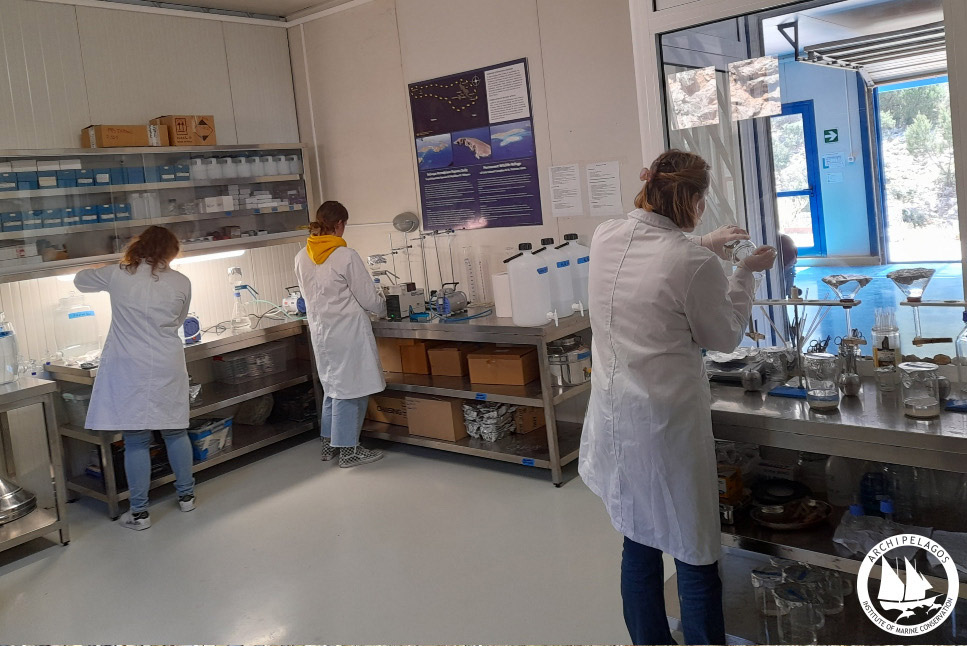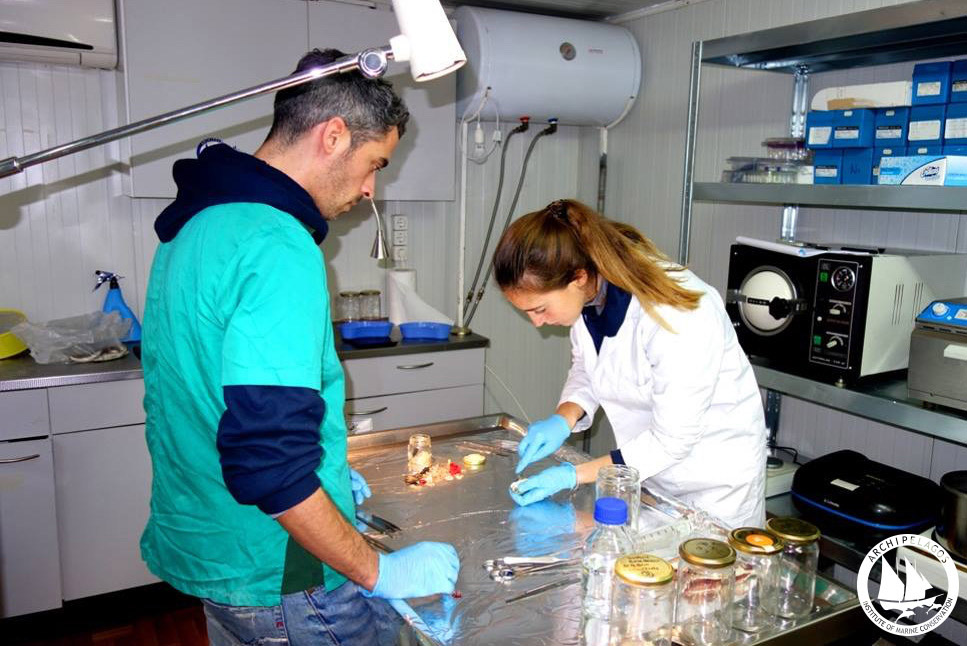
All levels of ecosystems and the food chain of the Greek seas have been infiltrated by fragments and fibers of plastic waste exposed to the environment. This is evidenced by the results of the first extensive study conducted in the Aegean to record the content microplastic pollutants, which are presented in the new scientific publication of the Institute of Marine Protection “Archipelago” and are of particular concern.
In particular, 25 marine animals found dead on the coasts of the northeastern Aegean Sea were examined: eight dolphins, two Mediterranean seals and 15 sea turtles, and found that 10,639 microplastic fiber entered their gastrointestinal tract. It is noted that the findings of the Institute’s fourteen previous scientific publications on microplastic pollution from 2009 to date have been equally disappointing.
The analyzes were carried out in the laboratories of the Institute, and the research was the result of the collaboration of scientists from the Department of Biomedicine, University of Padua, Italy, Zoological Station Anton Mandrel Italy and university ha ha California Sur in Mexico.
“Let’s be clear that the animals we studied did not die from the use of plastic items. The studies were carried out on several dozen animals that are washed away every year, ”she told K. Anastasia Miliudirector of research at the Archipelagos.
Filthy“plastic” mediterranean
As she explains Mediterranean Sea it is one of the most burdened seas in terms of plastic pollution. Why is this happening; “This is a semi-enclosed sea, whose the coastline is mostly populated and tourism activity is also intense here.. At the same time, there is a big problem of pollution management, which, of course, occurs throughout the Mediterranean, but in our seas the situation is even worse. Many parts of the country insist on presenting the image of an open dump even with the tourist season in mind. Result at 100 m2 seabed contains about 43.55 items of waste, of which 70–80% they are plastics of various types.”
Ms. Miliou even mentions that plastic bags continue to “reign” in Greece, despite the regulation on this issue that has come into force, the same thing is happening with plastic. once benefits, and ecologists dealing with this issue find scattered litter all year round along the edges of urban and rural roads, in tourist areas, in rich ecosystems, as well as near archaeological sites.
“Most of these pollutants end up in the sea,” Ms Miliou says, pointing out that Greece is not the only polluter in the Aegean. “A serious problem is also caused by the huge volumes of plastic pollution, which also come from neighboring countries.”

From small V nanoplastics
A report published in January 2019 in the scientific journal Nature presenting the results of the studies in which they were reviewed. 50 marine animals of 10 different species on the coast of Britain, mentioned as ” microplastic were ubiquitous, particles were found in every animal studied.”
Most of the particles were fibers (84%), and the remaining 16% were fragments. The particles were predominantly blue and black (42.5% and 26.4%), with nylon being the most common polymer type (60%).
According to Ms. Miliou, in recent years even smaller fragments of plastic waste, so-called nanoplastics, proved to be especially dangerous, given that they penetrate deeper into the tissues of organisms, even humans. Their effects, as reported in the Nature report, are not defined in detail.

“The harmful effects of tiny plastic fragments entering the food chain are not yet fully understood,” explains director research in the Archipelagos and emphasizes that: “in addition to the toxic chemicals contained in plastic from the production from –heavy metals, flame retardants, phthalates connections bisphenols, etc..- when plastic is in the marine environment for months or years, it acts like a “sponge”, as it gets other toxic substances contained in sea water – pesticides, organochlorine compounds etc.). Thus, when plastic fragments enter various organisms and humans through the food chain, the toxic effects are multiple.”
Ms. Miliou mentions something that is also noted in his report. Nature. Tcetaceans are an important indicator through which we understand the impact of pollution on the marine environment. And as he adds:corresponding conclusions are found in almost all the thousands of samples that we analyze daily, samples of various fish and invertebrate species, marine flora, sea water and bottom sediments.“.
Source: Kathimerini
Ashley Bailey is a talented author and journalist known for her writing on trending topics. Currently working at 247 news reel, she brings readers fresh perspectives on current issues. With her well-researched and thought-provoking articles, she captures the zeitgeist and stays ahead of the latest trends. Ashley’s writing is a must-read for anyone interested in staying up-to-date with the latest developments.